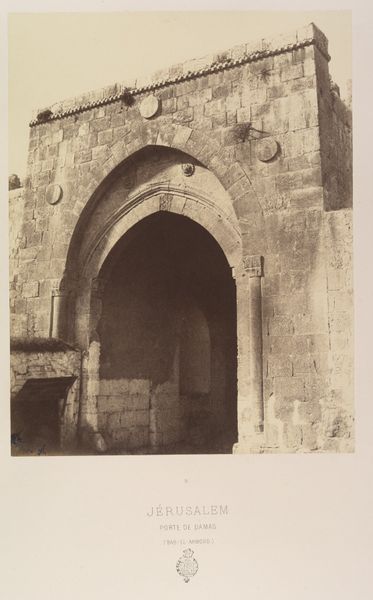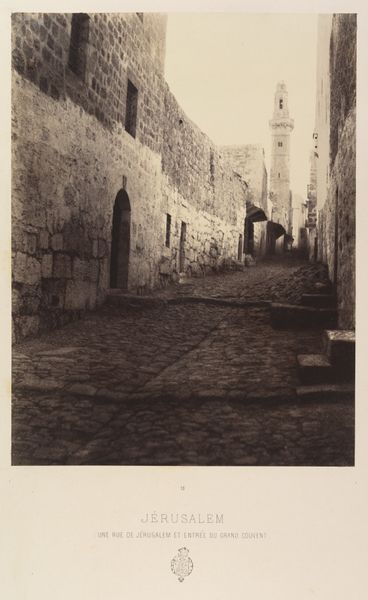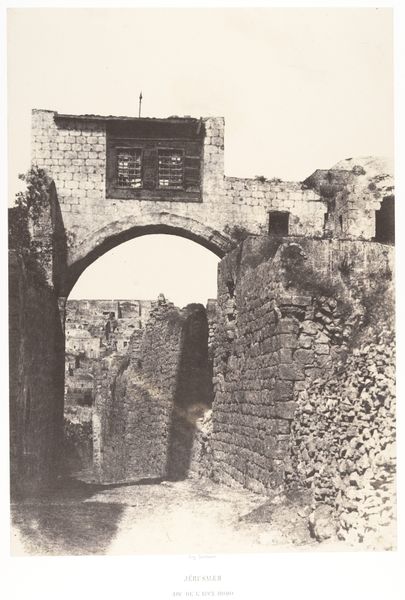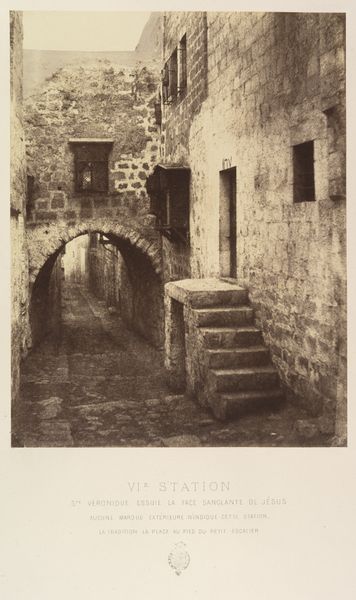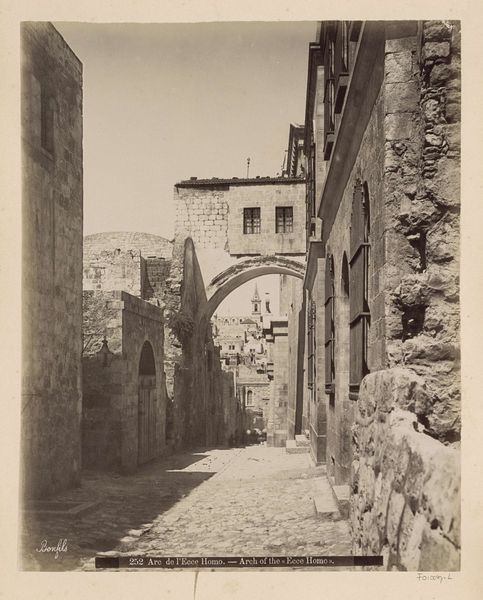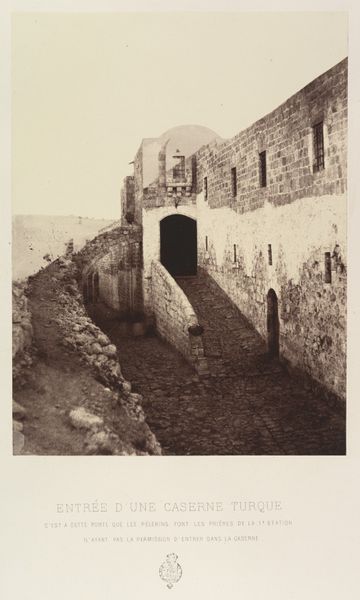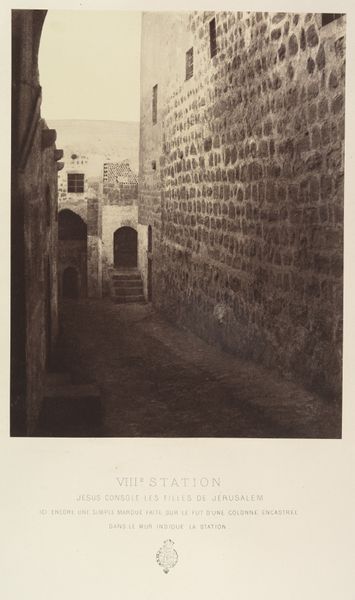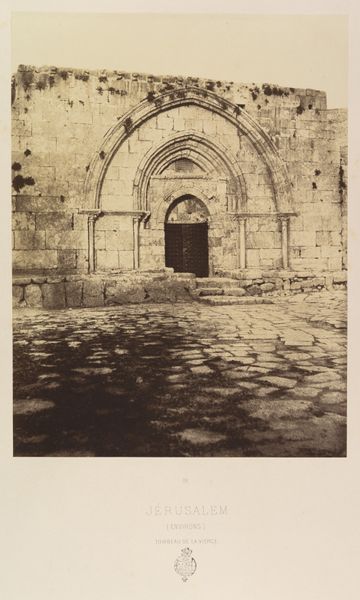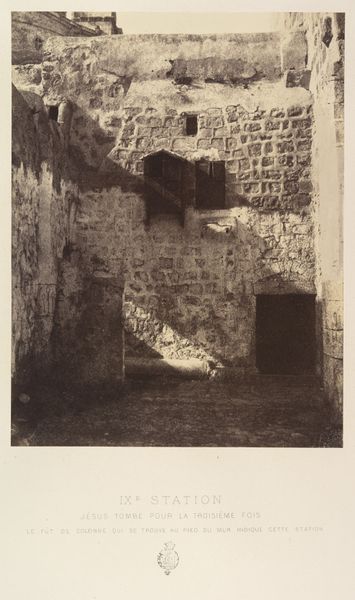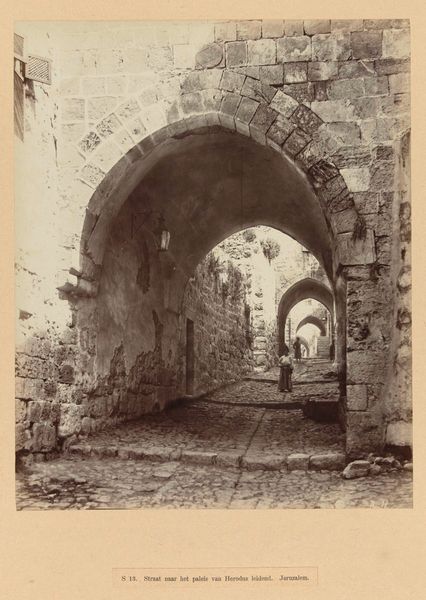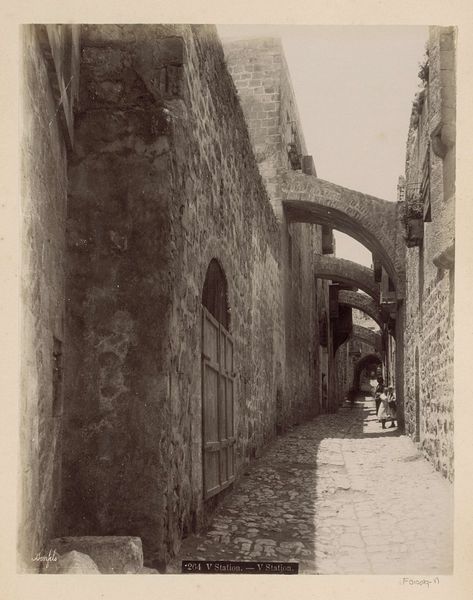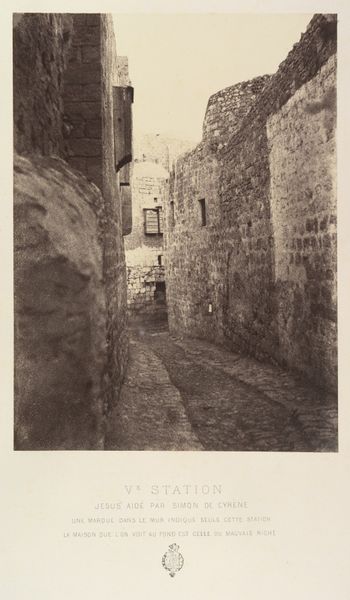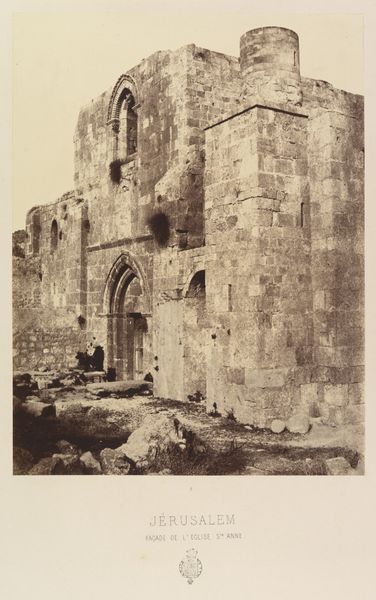
VIIe Station. Jésus tombe pour la seconde fois. Ancienne porte judiciaire, il s'y trouvait une colonne ou l'on exposait les condamnés; Elle éxiste encore cachée dans l'intérieur de la maison a gauche 1860
0:00
0:00
photography, gelatin-silver-print, architecture
#
photography
#
gelatin-silver-print
#
history-painting
#
architecture
Dimensions: Image: 11 in. × 8 1/8 in. (28 × 20.7 cm) Mount: 17 15/16 × 23 1/4 in. (45.5 × 59 cm)
Copyright: Public Domain
This albumen print was made by Louis de Clercq, around the 1850s, and it depicts the seventh station of the Via Dolorosa in Jerusalem, where Jesus is believed to have fallen for the second time. De Clercq was commissioned to document sites in the Holy Land, as increased tourism created a demand for imagery. The photograph’s caption suggests a tension between sacred history and social reality, as the site was once a judicial center where criminals were exposed. The composition emphasizes the stone archway and the shadows within, imbuing the location with a sense of solemnity. The image is a product of its time, shaped by European orientalism and religious sentiment. It reflects the rise of photography as a tool for documentation and the growing interest in the historical and religious sites of the Middle East. By examining archival material, travel accounts, and religious texts, we can better understand how this image was created and what it meant to its original audience. Art always reflects the social and institutional forces of its time.
Comments
No comments
Be the first to comment and join the conversation on the ultimate creative platform.
